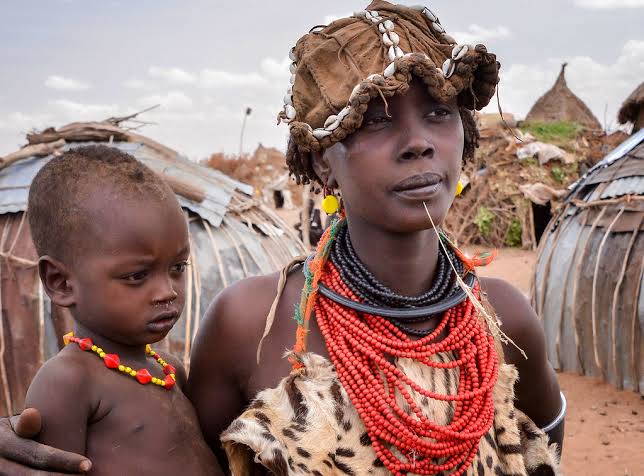
The largest clan is the Galbur, or Water and Crocodile clan. The Dassanech believe its members have the power over both water and crocodiles and are responsible for dealing with diseases of the glands across the tribe. The Turat clan is responsible for dealing with burns from the fire. They have powers to keep away snakes and to cure many diseases, and also have the ability to keep enemies away from their animals. Another important clan is Turnyerim, which has powers over drought. They pray for rain during dry periods and they can also cure snakebites by spitting on the wound. Other clans claim to have healing powers over eye infections, scorpion bites, muscular problems, and so on. Members of the same clan are forbidden from marrying – or indeed dancing – with each other.
The biggest ceremony in a man’s life of the Dassenech tribe is called Dimi. Its purpose is to celebrate and bless his daughter for fertility and future marriage. When he has gone through Dimi, a man becomes an elder. About 10 cattle and 30 smaller animals are slaughtered and other stock is traded for coffee. Men and women dress in animal fur capes to feast and dance, and the leaders of the village bless the girl.
Dimi ceremonies, with their need to slaughter cattle, take place in the dry season – when cattle aren’t producing much milk, and grazing has limited value. Slaughtering cattle at this time of year provides meat when other food sources are low.
Regardless of the various clans in the Dassanech tribe and the individual roles they perform, there is unity amongst them which is what AFRICA is all about.
